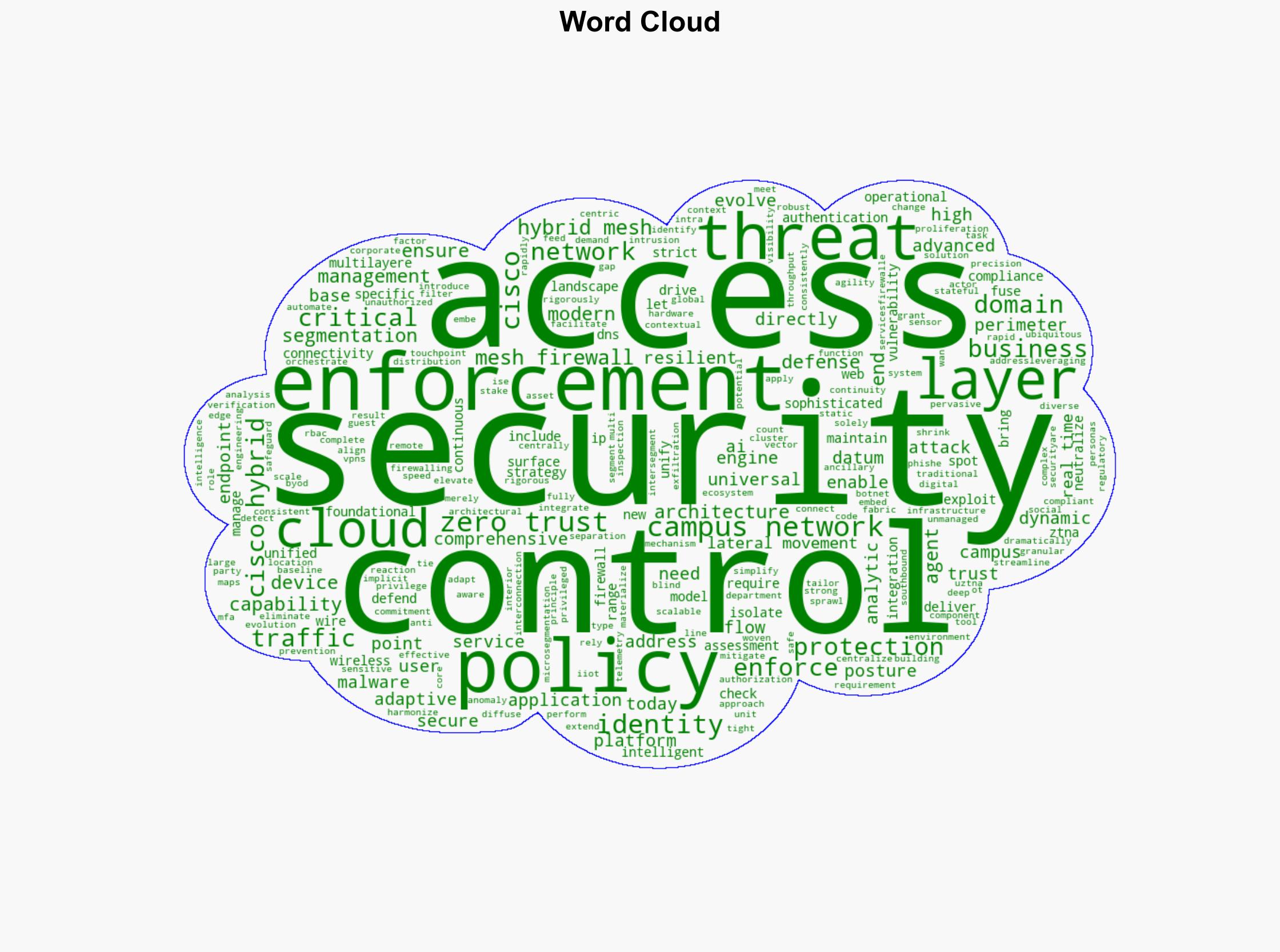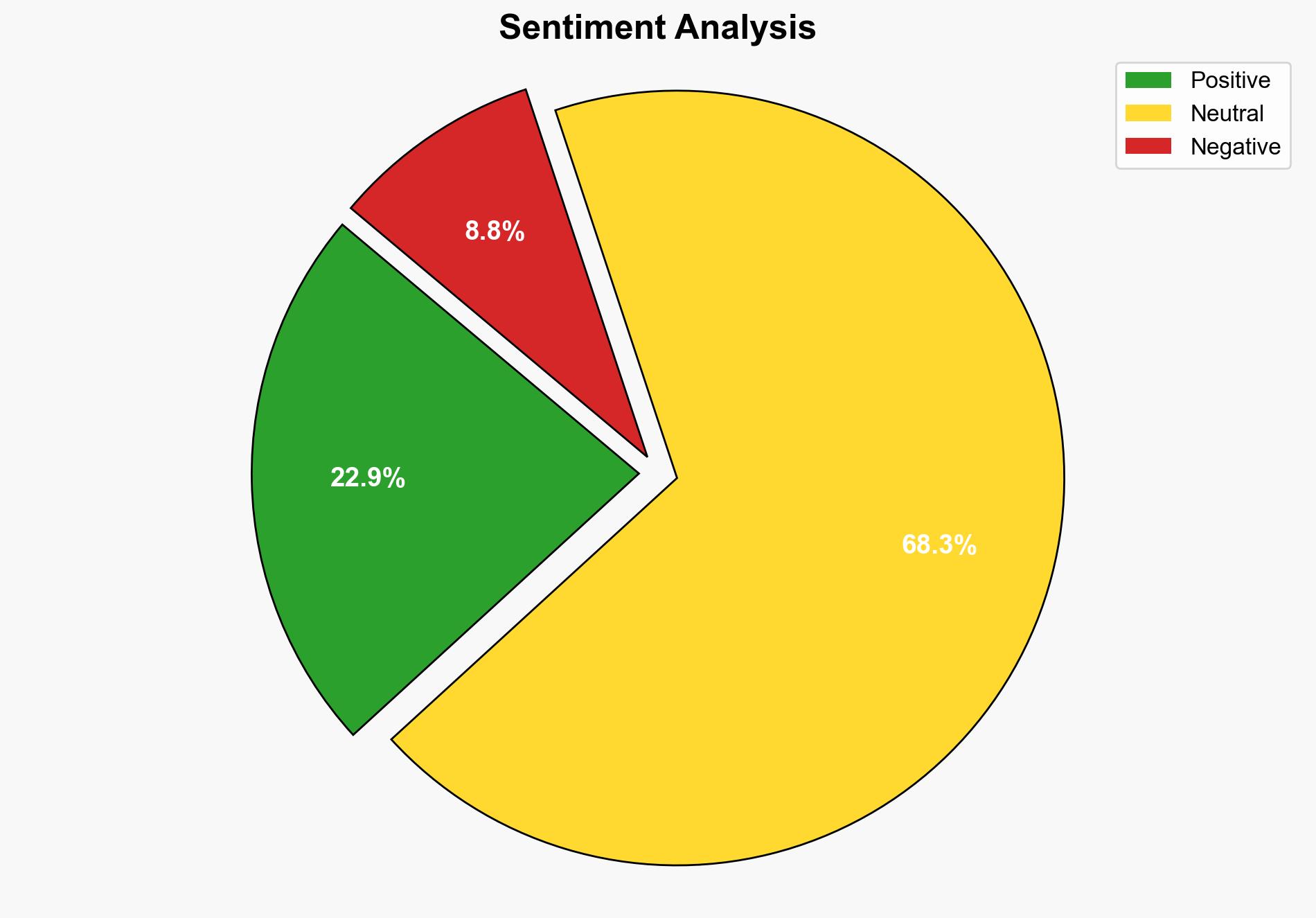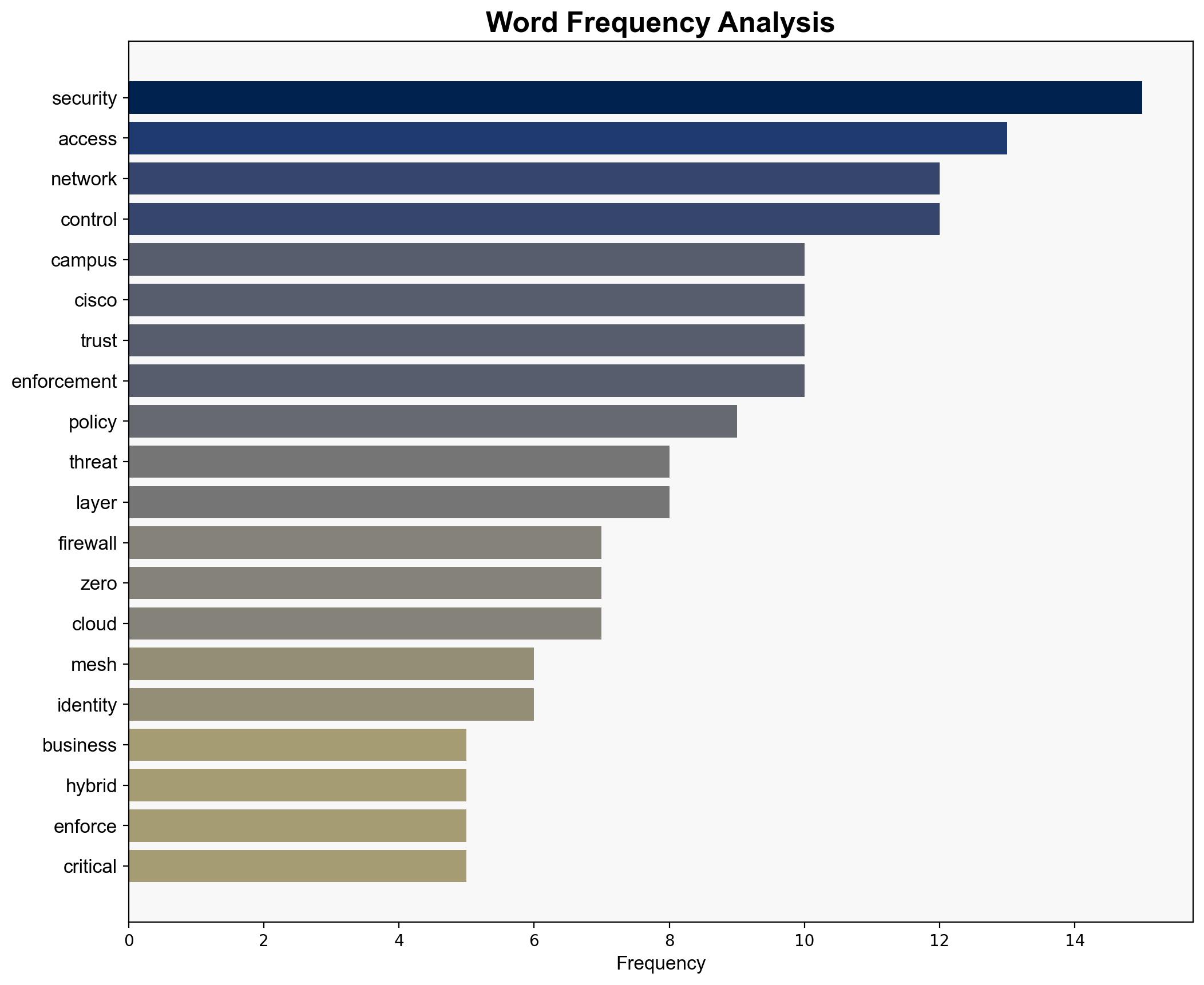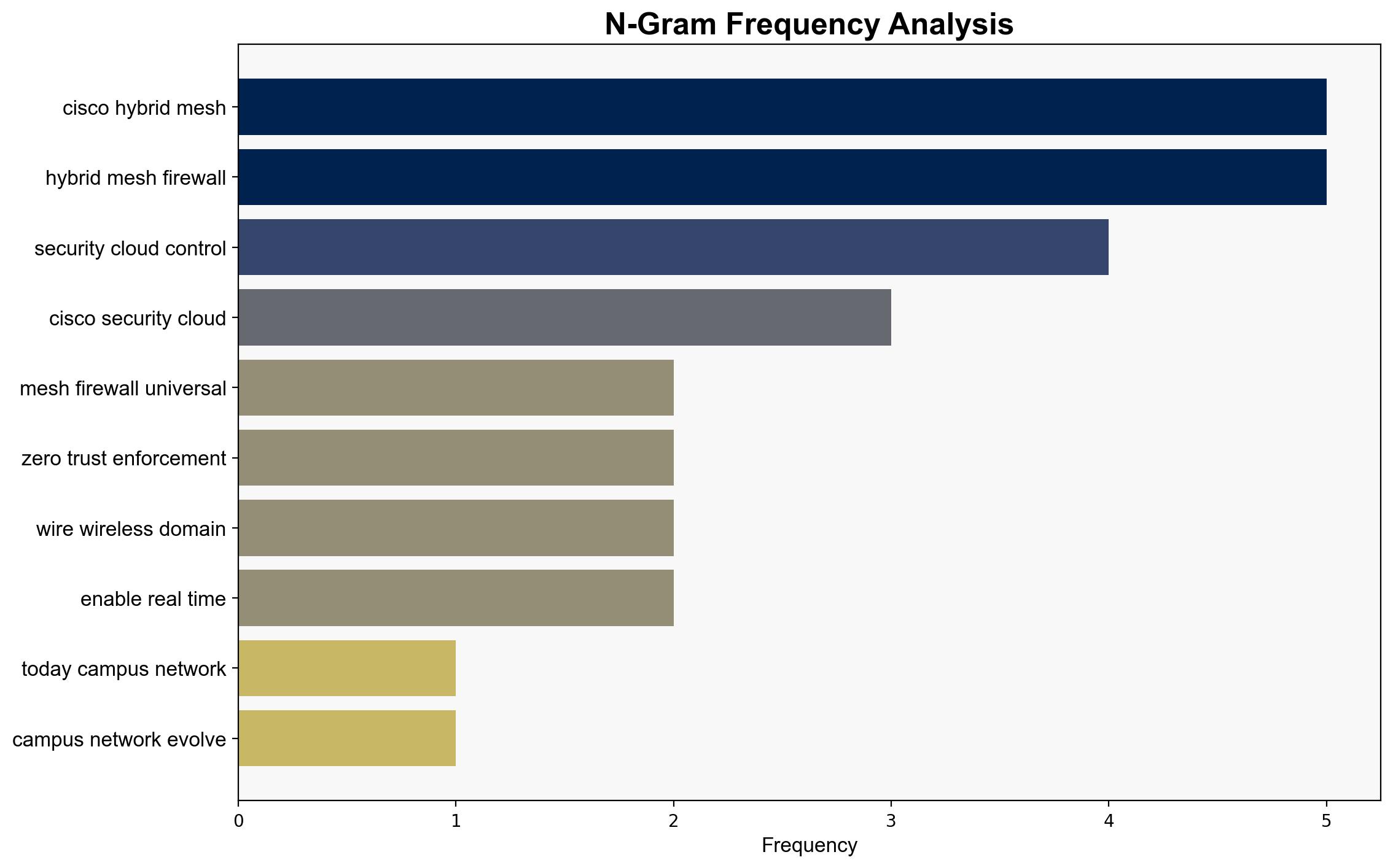The Architectural Convergence of Hybrid Mesh Firewall and Universal Zero Trust – Cisco.com
Published on: 2025-10-23
Intelligence Report: The Architectural Convergence of Hybrid Mesh Firewall and Universal Zero Trust – Cisco.com
1. BLUF (Bottom Line Up Front)
The strategic judgment indicates a medium confidence level in the hypothesis that Cisco’s integration of hybrid mesh firewall and universal zero trust access (UZTNA) significantly enhances network security by reducing attack surfaces and preventing lateral threats. The recommended action is to closely monitor the implementation and effectiveness of this architecture in diverse environments to validate its efficacy.
2. Competing Hypotheses
Hypothesis 1: Cisco’s architectural convergence of hybrid mesh firewall and UZTNA effectively reduces vulnerabilities and enhances security across campus networks by providing a unified, scalable platform for zero trust enforcement.
Hypothesis 2: The integration of hybrid mesh firewall and UZTNA may not significantly enhance security due to potential implementation challenges and the complexity of managing diverse network environments, which could lead to security gaps.
Using the Analysis of Competing Hypotheses (ACH) 2.0, Hypothesis 1 is better supported due to the structured approach of integrating multiple security layers and the emphasis on identity-based access control, which aligns with modern security needs.
3. Key Assumptions and Red Flags
Assumptions:
– The integration of hybrid mesh firewall and UZTNA will be implemented effectively across various network environments.
– Identity-based access control will adequately address the dynamic nature of modern threats.
Red Flags:
– Potential over-reliance on technology without adequate human oversight.
– Lack of detailed information on how the architecture adapts to rapidly evolving threat landscapes.
4. Implications and Strategic Risks
The convergence of these technologies could lead to a significant reduction in cyber threats if effectively implemented. However, failure to address implementation challenges could result in persistent vulnerabilities. The strategic risk includes potential exploitation by sophisticated threat actors if the architecture does not adapt to new attack vectors.
5. Recommendations and Outlook
- Conduct regular assessments of the architecture’s effectiveness in various environments to ensure adaptability to emerging threats.
- Develop a comprehensive training program for network administrators to manage and optimize the new security architecture.
- Scenario-based projections:
- Best Case: Successful implementation leads to a significant reduction in cyber incidents.
- Worst Case: Implementation challenges result in security gaps and increased vulnerability.
- Most Likely: Gradual improvement in security posture with ongoing adjustments and optimizations.
6. Key Individuals and Entities
– Cisco Systems, Inc.
7. Thematic Tags
national security threats, cybersecurity, network security, zero trust architecture





